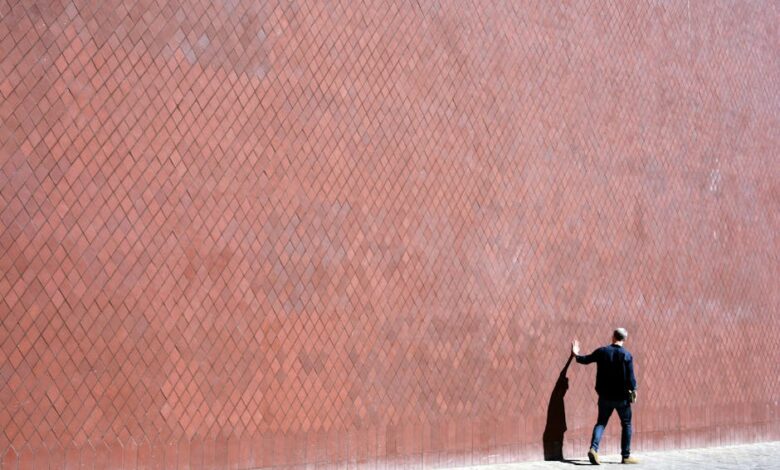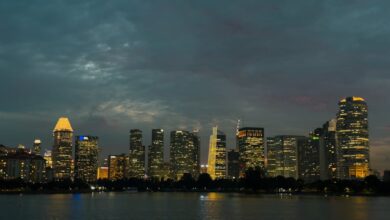The Artistic Paradox: When Loathing Fuels Creation

Imagine a director, celebrated for his provocative and often uncomfortable films, declaring a burgeoning technology “gross and slimy.” Now imagine that same director then embracing that very technology to create a three-hour adaptation of Dracula, featuring the iconic vampire engaging in pornography and exploiting tech workers. Welcome to the world of Radu Jude, the acclaimed Romanian filmmaker, and his latest, frankly audacious, project.
It’s a setup that’s almost too perfect, isn’t it? A paradox wrapped in a critique, delivered with a hefty dose of artistic audacity. Jude’s comments about AI – that it’s fundamentally repulsive – juxtaposed with his decision to weave it into the fabric of his new film, speaks volumes about the complex, often contradictory, relationship we’re all developing with artificial intelligence. It’s not just a tool; for many, it’s a mirror, reflecting some uncomfortable truths about ourselves and our societies.
The Artistic Paradox: When Loathing Fuels Creation
Jude’s statement isn’t an isolated incident. The art world, much like every other sector, is grappling with the rapid ascent of AI. There’s a palpable tension between awe and apprehension, excitement and ethical alarm. Many artists view AI as a threat to originality, a harbinger of soulless content, or even an exploitative machine built on the backs of human creators.
So, why would a director like Jude, who clearly harbors a deep skepticism, not just dabble but immerse his work in AI? The answer, I believe, lies in the very nature of critique. Sometimes, to truly understand, to truly dismantle, or to truly expose the unsettling aspects of something, you have to engage with it directly. You have to get your hands dirty, even if the dirt feels “gross and slimy.”
It’s a powerful form of artistic judo: using the perceived weakness or repugnance of a tool to amplify your message. By intentionally embedding AI into a narrative that already leans into exploitation and the grotesque, Jude isn’t just making a film; he’s making a statement about AI itself. He’s forcing us to confront not just what AI can do, but what it represents, and the uncomfortable implications of its growing presence in our lives.
Dracula’s Digital Descent: Exploitation in the AI Age
The choice of Dracula as a central figure is, in itself, a stroke of genius. Bram Stoker’s original vampire is the epitome of exploitation: preying on the innocent, feeding on life, and manipulating those around him for his own sinister ends. What better metaphor, then, for the darker undercurrents of the digital age and the burgeoning capabilities of AI?
Jude’s Dracula isn’t just a monster of the night; he’s a monster of our times. The idea of Dracula doing porn and exploiting tech workers isn’t simply for shock value, though it undoubtedly achieves that. It’s a sharp, visceral commentary on the commodification of intimacy, the precariousness of modern labor, and the extractive nature of our digital economy. AI, in this context, isn’t just a background element; it’s a complicit force, or perhaps even a direct participant, in this new form of digital vampirism.
The Grotesque as a Lens for Truth
The “gross and slimy” nature Jude attributes to AI finds a disturbing parallel in the film’s content. When art leans into the grotesque, it often does so to reveal uncomfortable truths that polite society prefers to ignore. By portraying Dracula in such a raw, unsettling manner, and by using the very “gross” AI that he critiques, Jude creates a highly charged narrative space. It forces us to confront our own complicity, our own anxieties, and the potential for new forms of exploitation enabled by technology.
Consider the nature of AI itself: it learns from vast datasets, often scraped without consent, repackaging human creation and human experience into new forms. Is there not an echo of Jude’s “gross and slimy” sentiment in this process? The film seems to ask: if AI’s origins are ethically murky, what does that mean for the art it helps create, or the world it helps shape? Dracula, the ultimate consumer of human life, becomes a stand-in for a technology that consumes data, and by extension, human experience.
Beyond the Hype: Understanding AI’s Place in Creative Expression
Jude’s film, while critical, also highlights the unavoidable reality: AI is here, and it’s becoming an increasingly powerful tool, for better or worse, in creative fields. From generating realistic images and sophisticated text to assisting with complex visual effects and even composing music, AI’s capabilities are expanding at an exponential rate.
The conversation, then, must evolve beyond simple good-bad binaries. Instead, we need to explore the nuances of AI’s integration into art. Is it a mere assistant, augmenting human creativity? Is it a disruptive force, challenging our definitions of authorship and originality? Or, as Jude suggests, can it be a subject of art, a thematic device, and even a medium through which to critique itself?
The Human Element Remains Indispensable
Despite the sophisticated algorithms and generative capabilities, Jude’s project underscores an enduring truth: the human mind, with its capacity for critical thought, ethical consideration, and profound artistic vision, remains the ultimate driver. It is the human artist who chooses the tools, crafts the message, and imbues the work with meaning and intent, even if that intent is to provoke or disturb.
Radu Jude’s film is not an AI creation that happens to have a human director; it is a human creation that uses AI as both a tool and a thematic element. It’s a powerful reminder that while AI can simulate, generate, and even surprise, it is the uniquely human capacity for insight, irony, and the courage to confront the “gross and slimy” aspects of our world that truly define art.
A Discomforting Yet Necessary Reflection
Radu Jude’s AI-infused Dracula movie is more than just a shocking piece of cinema; it’s a vital cultural artifact that perfectly encapsulates our current moment. It forces us to confront the inherent contradictions in our relationship with technology: our dependence, our fascination, and our deep-seated anxieties. By embracing the “gross and slimy” nature of AI within a narrative of exploitation, Jude isn’t just challenging cinematic norms; he’s inviting a broader, more uncomfortable, yet absolutely necessary conversation about the future of art, technology, and what it means to be human in an increasingly AI-driven world. Perhaps, sometimes, the most profound insights come from the most discomforting places.





